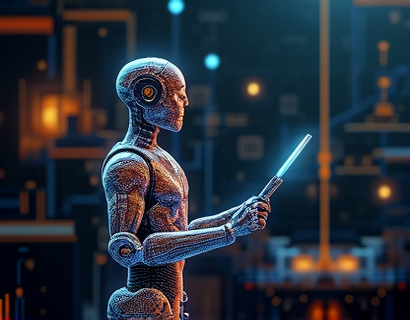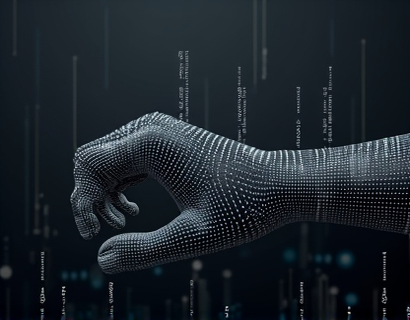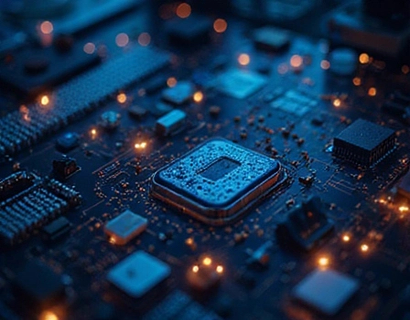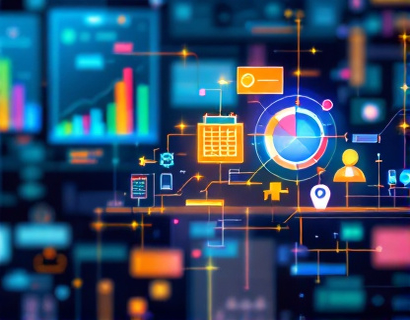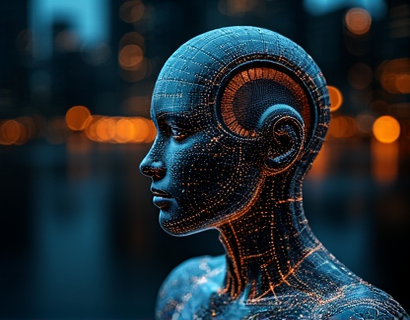Transforming Digital Interactions: The Synergy of Crypto and AI
The intersection of cryptocurrency and artificial intelligence (AI) is revolutionizing the digital landscape, offering unprecedented opportunities for tech innovators and early adopters. This convergence is not just about merging two advanced technologies but about creating a new paradigm for digital interactions. By leveraging the decentralized nature of crypto and the intelligent capabilities of AI, we can enhance online presence, streamline access to cutting-edge applications, and redefine user experiences.
Understanding the Basics
To fully appreciate the impact of this synergy, it's essential to understand the fundamental concepts of both crypto and AI. Cryptocurrency, at its core, is a digital or virtual currency that uses cryptography for security and operates on a decentralized network, typically a blockchain. This decentralization ensures transparency, security, and reduces the need for intermediaries.
Artificial intelligence, on the other hand, involves the simulation of human intelligence processes by machines, particularly computer systems. These processes include learning (the acquisition of information and rules for using it), reasoning (using rules to reach approximate or definite conclusions), and self-correction. When combined, these technologies can create systems that are not only secure and transparent but also intelligent and adaptive.
The Role of Blockchain in Enhancing Trust
Blockchain technology, the backbone of most cryptocurrencies, plays a crucial role in this transformation. It provides a tamper-proof ledger that records all transactions across a network of computers. This ensures that data is immutable and transparent, which is vital for building trust in digital interactions. For tech innovators, this means developing applications that can operate with a high level of trust and security, reducing the risks associated with data breaches and fraud.
In the context of digital engagement, blockchain can be used to create decentralized identity systems, ensuring that users have control over their personal data. This not only enhances privacy but also empowers users by giving them the ability to monetize their data through tokenized incentives. For early adopters, this represents a significant shift from traditional centralized models where data is often exploited for profit without user consent.
AI-Driven Personalization and User Experience
AI brings a new dimension to digital interactions through advanced personalization and user experience enhancements. By analyzing vast amounts of data, AI algorithms can understand user preferences, behaviors, and needs in real-time. This allows for highly customized experiences that are tailored to individual users, making interactions more relevant and engaging.
For instance, AI can power chatbots and virtual assistants that provide instant, context-aware support to users. These AI-driven interfaces can understand natural language, recognize emotions, and adapt their responses accordingly, creating a more human-like interaction. For tech innovators, integrating such AI-powered tools can significantly enhance user satisfaction and retention, providing a competitive edge in the market.
Decentralized Applications and Smart Contracts
One of the most exciting applications of the crypto-AI convergence is the development of decentralized applications (dApps) and smart contracts. dApps run on blockchain networks and are governed by smart contracts, which are self-executing contracts with the terms directly written into code. This eliminates the need for intermediaries and ensures that transactions are executed precisely as programmed.
AI can enhance dApps by providing intelligent automation and decision-making capabilities. For example, AI can be used to optimize the performance of smart contracts, ensuring they adapt to changing conditions and user needs. This combination can lead to the creation of more robust, efficient, and user-friendly applications that can operate autonomously and securely.
Enhancing Security Through Advanced Cryptography
Security is a paramount concern in the digital world, and the integration of crypto and AI offers new ways to bolster security measures. Advanced cryptographic techniques, such as homomorphic encryption and zero-knowledge proofs, can be combined with AI to create systems that protect user data while still allowing for useful computations and insights to be derived from it.
For instance, homomorphic encryption allows data to be processed in its encrypted form, ensuring that sensitive information remains confidential. AI can then analyze this encrypted data to generate insights without ever exposing the raw data. This not only enhances privacy but also builds trust among users who are increasingly concerned about data security.
Predictive Analytics and Fraud Detection
AI's strength lies in its ability to process and analyze large datasets to identify patterns and make predictions. In the context of crypto and digital interactions, this can be particularly powerful for fraud detection and risk management. By analyzing transaction patterns and user behavior, AI algorithms can detect anomalies and potential fraudulent activities in real-time.
For example, AI can monitor blockchain transactions for signs of money laundering or other illicit activities, flagging suspicious behavior for further investigation. This proactive approach can significantly reduce the risk of fraud and enhance the overall security of digital platforms. Tech innovators can leverage these predictive analytics tools to create more secure and reliable services, attracting users who value safety and integrity.
Streamlining Access to Cutting-Edge Applications
The convergence of crypto and AI can also simplify access to advanced technologies for tech innovators and early adopters. By using blockchain-based marketplaces and token economies, users can seamlessly discover, access, and pay for cutting-edge applications and services. This decentralized approach reduces barriers to entry and fosters a more inclusive ecosystem where innovation can thrive.
For instance, tokenized subscriptions and pay-per-use models can provide flexible and cost-effective access to premium features and tools. AI can further enhance this by recommending relevant applications based on user preferences and usage patterns, creating a personalized and efficient user experience.
Building a Community-Driven Ecosystem
One of the most significant advantages of the crypto-AI synergy is the potential to build community-driven ecosystems. Blockchain's decentralized nature encourages collaboration and community involvement, while AI can facilitate communication and coordination among community members.
For example, decentralized autonomous organizations (DAOs) can be formed to manage and govern projects, with AI tools enhancing decision-making processes and ensuring transparency. Community members can propose, vote on, and execute changes, creating a truly collaborative and democratic environment. This not only fosters innovation but also builds a strong sense of ownership and engagement among users.
Challenges and Considerations
While the potential benefits are substantial, there are also challenges and considerations to keep in mind. The regulatory landscape for cryptocurrencies and AI is still evolving, and compliance is crucial to avoid legal issues. Additionally, the technical complexity of integrating these technologies requires a skilled workforce and significant investment.
Moreover, there is a need for education and awareness among users to fully understand and leverage the benefits of crypto and AI. Tech innovators and early adopters should stay informed about the latest developments and best practices to navigate this rapidly changing landscape effectively.
Conclusion
The convergence of cryptocurrency and artificial intelligence is poised to transform digital interactions in profound ways. By combining the security and transparency of crypto with the intelligence and adaptability of AI, we can create a new era of digital engagement that is more secure, personalized, and inclusive. For tech innovators and early adopters, embracing this synergy offers a unique opportunity to lead the charge in building a more advanced and equitable digital world.











